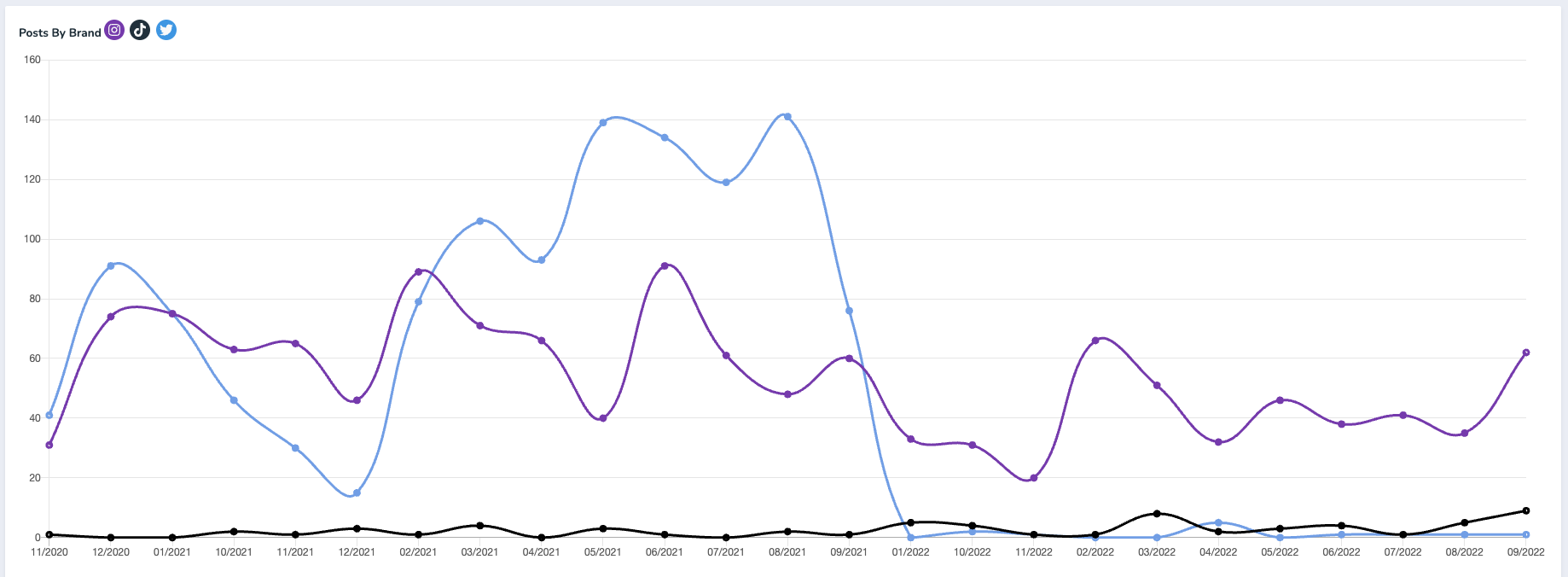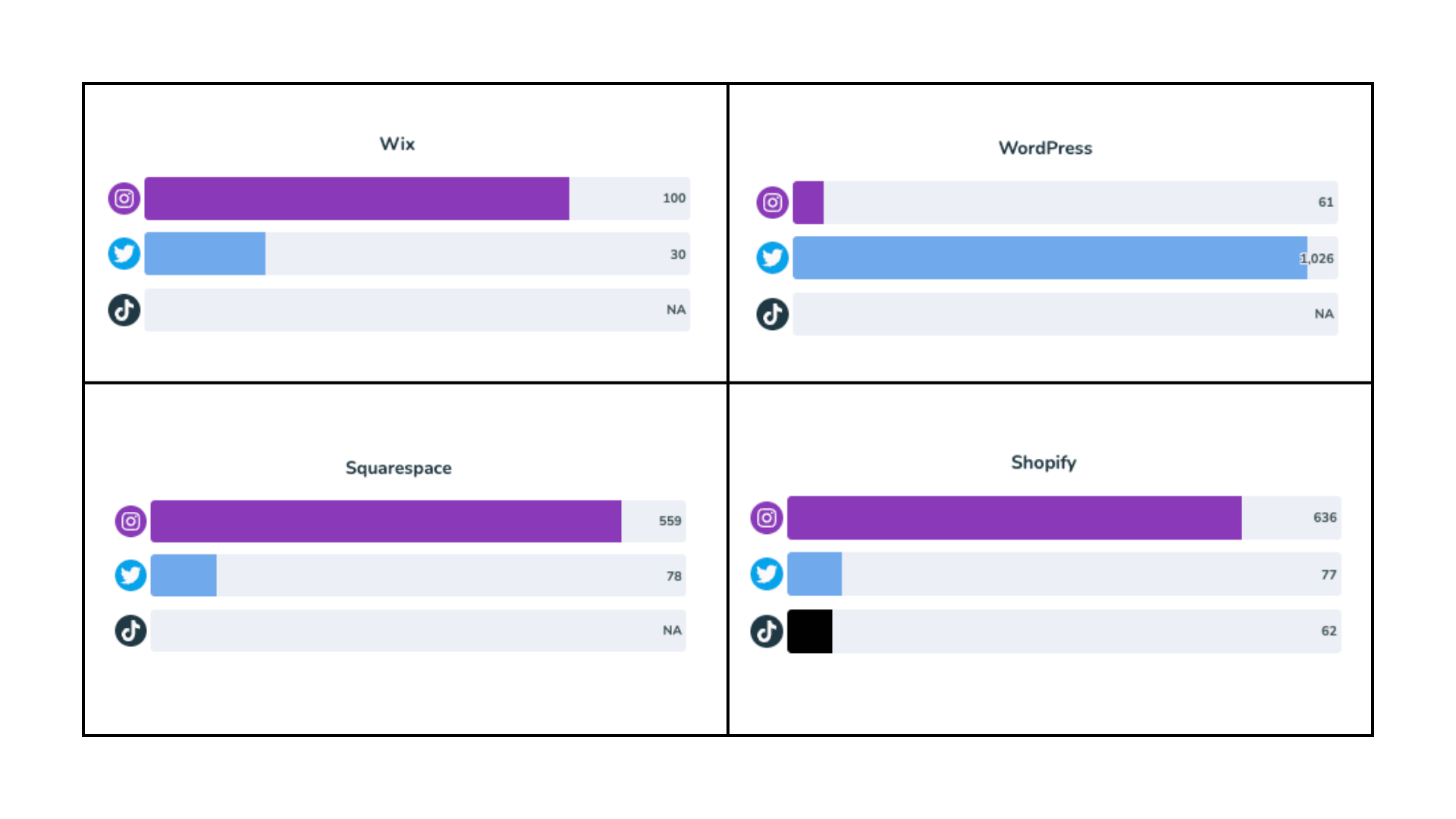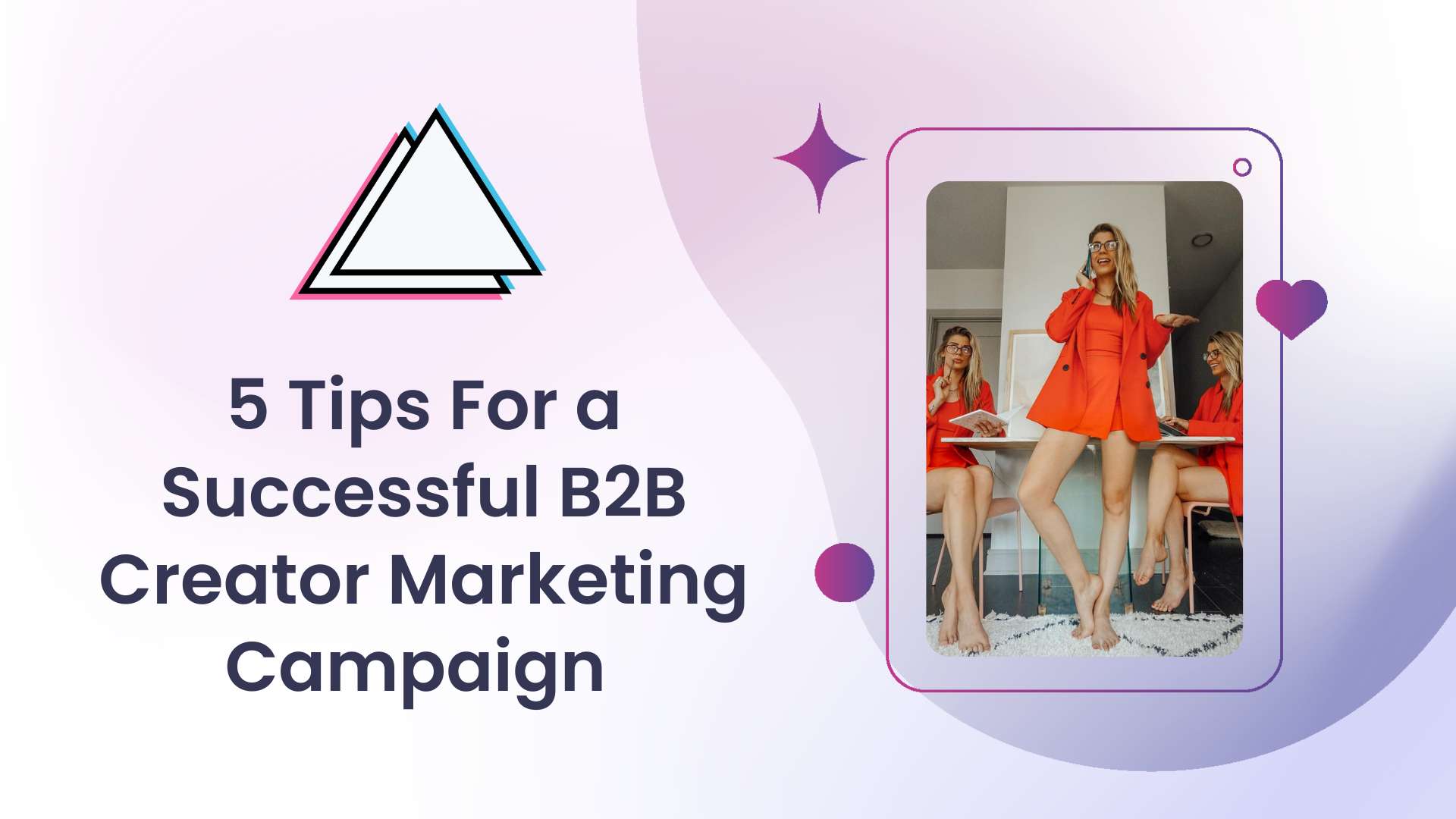Creator marketing for B2B industries is on the rise. Eighty-five percent of B2B marketers think interest in working with creators will increase within the next 12 months. Additionally, 70% of marketers with highly successful marketing methods include creator marketing in their strategy.

Photo by Courtney K via iStock.
During the B2B buying journey, B2B is often slower and requires much more research on the consumer’s end than a B2C buyer’s process. B2B teams sort through their options, compare price ranges, analyze product differences, and weigh many other factors.
From a general consumer perspective, trust is formed when they receive recommendations from their close networks and creators. The same goes for B2B consumers; they trust their peers, executives in the field, and creators with experience in the industry.
B2B consumers, just like B2C consumers, conduct much of their research online. Seventy-four percent of business buyers do more than half of their research online. Also, like B2C consumers, they are humans! Humans who scroll through social media for fun and research and form opinions based on the content they see.
Creator marketing successfully establishes the trust that B2B buyers need to move forward with their decisions.
 Having a strong creator marketing strategy is critical. Done right, and often with the guidance of a creator marketing agency, it will increase brand awareness, brand reputation, lead generation, and more. Thus, it is a surprise less than half of B2B marketers reported having a documented creator strategy.
Having a strong creator marketing strategy is critical. Done right, and often with the guidance of a creator marketing agency, it will increase brand awareness, brand reputation, lead generation, and more. Thus, it is a surprise less than half of B2B marketers reported having a documented creator strategy.
Creating a solid creator marketing strategy starts with proper documentation and deep research. When marketing to your target audience, it’s imperative your customers are looking for and analyzing both qualitative and quantitative data surrounding customer behavior.
A strong influential marketing strategy helps you accomplish your goals; 72% of B2B marketers said their company’s creator campaign improved their brand reputation, and 70% said it improved their brand awareness.
Here are five tips to help you develop a strong strategy that will lead to a successful campaign:
1. Analyze Competitor Creator Activity
You can level up your strategy by analyzing how your competitors move in the space. What creators are they partnering with? What methods are they employing? Observing their tactics and movement can help you identify the gaps and where you can improve. It will help you learn from both their mistakes and their successes and help you keep your eye on industry trends.
Using a Creator Listening Platform can help you monitor your competitors without having to keep tabs manually. Creator listening tools, like Go Prism, take away the extra steps and save you time when forming your strategies. Take a look at how you can utilize these tools:

The above is Post Activity for Shopify, Squarespace, Wix, and WordPress in 2021.
In 2021, WordPress showed that it was the SoV leader, through most of the year, before petering out toward the last quarter of the year.
Squarespace had peaks and valleys and ended narrowly defeated by Shopify in SoV for the year.
Wix remained steady in their play, steadying the foundation in fourth place for SoV.

However, that is far from the end of the story. The following ten months tell a starkly different tale for 2022. The mighty roar of WordPress was turning into nothing more than a bark across creators’ channels by the end of 2022. WordPress finished the year battling with Wix for a quieter voice.
Next, we’ll evaluate the platform to see the trend detail of the competitors’ mentions across TikTok, Instagram, and Twitter which had a significant presence through December 2021; then, it became rarely used. Instagram maintained a constant presence among its competitors and showed an upward trend in 2022. Lastly, TikTok has not gained traction with Squarespace, Wix, or WordPress. However, Shopify showed light interest in 2021, with an increasing trend of mentions across the platform in 2022.

 From the above, Twitter had a massive presence over the past two years. WordPress predominantly used the presence as they appeared to go against the grain of their competitors that leveraged Instagram. Additionally, all four have a significant untapped opportunity on TikTok. Shopify is the only platform that has tapped into TikTok and there is much potential for them and the others on the booming app.
From the above, Twitter had a massive presence over the past two years. WordPress predominantly used the presence as they appeared to go against the grain of their competitors that leveraged Instagram. Additionally, all four have a significant untapped opportunity on TikTok. Shopify is the only platform that has tapped into TikTok and there is much potential for them and the others on the booming app.
Take a look at the type of content you can be creating:
@audacitycosmetics This is just a general explanation 😊 hope this helps! 💗 #bossup #hustlecheck #website #fy #fyp #foryoupage #businesswoman #bossgirl #foryou #tips ♬ original sound – Audacity Cosmetics
Leveraging this type of data for your brand will help you increase your competitive edge against competitors.
2. Consider a Multi-Platform Approach
A multi-platform approach allows you to utilize multiple features and reach wider audiences. Different platforms and features also help you achieve your campaign’s goals.
LinkedIn. While it’s not the first platform that comes to mind for creator marketing, it is highly beneficial and should not be underestimated. LinkedIn is a go-to platform for lead generation, making it a B2B must. LinkedIn will connect you with people in your industry and introduce you to their networks, making you directly visible to the audiences you want. On LinkedIn, utilize polls, page link stickers, event planning features, and templates to make your content stand out.
Instagram. Instagram is the destination to run visually appealing and informational campaigns with creators. Instagram can reach large audiences with a variety of interests and will aid you in generating brand awareness and building brand loyalty. In an Instagram campaign, utilize Reels, stickers, IG Lives, countdowns and reminders, and product tags where they apply.
TikTok. TikTok’s platform is home to a wide variety of niches and a go-to for many who want to learn more about a topic in which they’re interested. Younger generations are even turning to TikTok, instead of Google, as a search engine. TikTok influencer marketing is an excellent platform for spreading knowledge about your product and connecting with audiences authentically. Tap into TikTok niches and utilize duets, branded hashtags, product links and landing pages, and TikTok Livestreams and Q&As.
Facebook. Facebook is used for both entertainment and professionally by many. Facebook is a fan favorite among older generations, and understanding who you are targeting will help you identify which platforms will suit your campaign best. As a B2B business, you can use Facebook influencer marketing as a place to support your sales and customer service teams. Make sure you utilize lives, stories, Reels, and launch private and public groups on Facebook.
Monday.com activated on Instagram and LinkedIn to partner with nine creators with professional backgrounds. The creators shared valuable tips and fun anecdotes to demonstrate how Monday.com is a big part of their productivity and success.
View this post on Instagram
View this post on Instagram
3. Partner with the Right Creator
For a B2B campaign, it is crucial to partner with creators who are a part of your industry’s niche and have a real connection or expertise in your field. Not only will they help you effortlessly explain your product to audiences, but they will give you professional credibility.
Creators in professional and business-related niches include thought leaders, tech gurus, and other industry experts. These creators have earned the trust of their followers and others in their field, and B2B customers often seek their advice.
Identifying relevant and brand-safe creators in your industry may be a challenging task. Without a creator listening tool, it can be time-consuming as it involves lots of behind-the-scenes research. Creator Listening tools, like Go Prism, help you efficiently identify creators, their brand safety level, audience demographics, and more.
Consider micro-creators. When running a B2B campaign, achieving higher engagement rates is more productive than reaching mass audiences. While large amounts of eyes are important, higher engagement rates indicate that people are interested and actively learning about your product. Micro-creators generally have more significant engagement rates as they are more connected to their followers. They can also help to ensure you are reaching audiences that have a need for your services.
Always on campaigns. An always-on approach is valuable for building relationships with your creators and audiences. During these partnerships, take the time to teach them about your product, invite them to events, and co-host events with them. When you take the time to build those relationships, you will unlock their trust and eventually their dedicated advocacy for your product, which will enhance your validity with their audiences as well.
4. Uncover Content Topics and Key Messages for Your Campaign.
To run a successful campaign, you must understand what content is relevant to your audiences. Creator listening technology assists you in identifying industry trends, top hashtags and mentions, and more.
When you discover what your audience is looking for and what topics they gather around online, you can form messaging that will resonate with them. Then you can help audiences understand your product and show them why they need it.
Demonstrate to audiences how your product will enhance their business endeavors by creating valuable and educational content. Valuable content includes creators:
- Reviewing the product
- Beta testing
- Hosting Live Q&A’s
- Providing how-to information
- And more.
5. Set KPIs Against Goals.
To efficiently assess your strategic efforts, make sure to set KPIs that are aligned with your campaign goals. Setting clear-cut measurable goals will help you track progress and optimize your campaigns in the future.
B2B companies frequently set goals that include increasing brand awareness, improving brand reputation, and generating leads. These contribute to both short-term and long-term success.
These goals can be accomplished through various tactics from your company, such as providing educational resources, free trials, demos, and more. Including tactics such as these in your campaigns will also provide valuable data points and KPIs to help you measure your success.
Overall, B2B has evolved past classic forms of advertising. The human touch is as essential for B2B buyers as for B2C. You need to form authentic connections and establish credibility, and creators are the key.
Open Influence is a global influencer agency that specializes in building campaigns tailored to your needs. Don’t hesitate to reach out to us today, and let’s get started on achieving your B2B goals.






